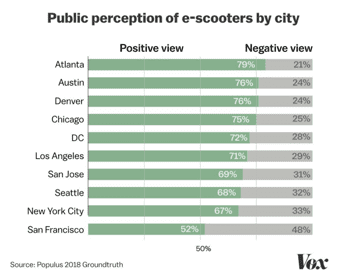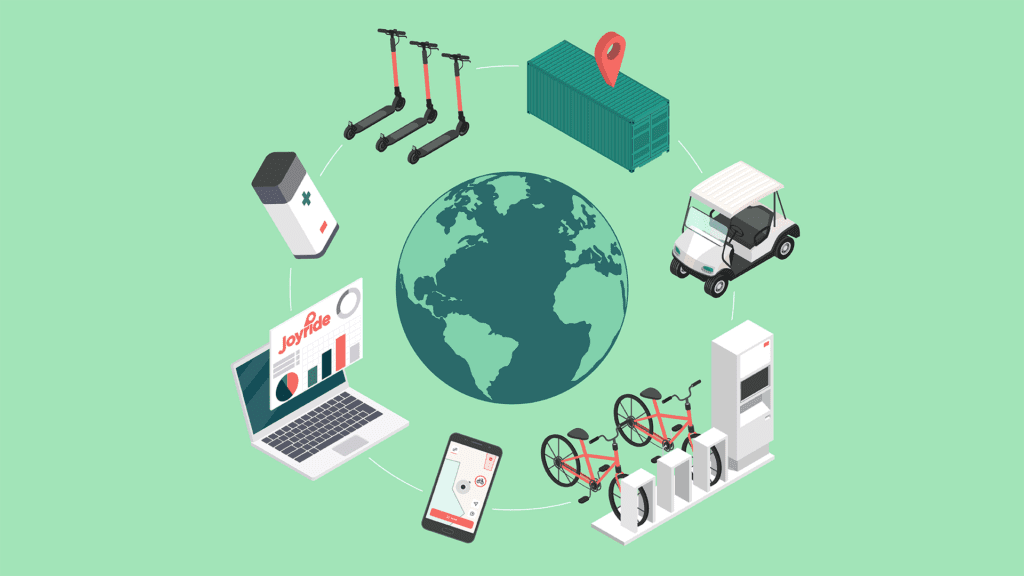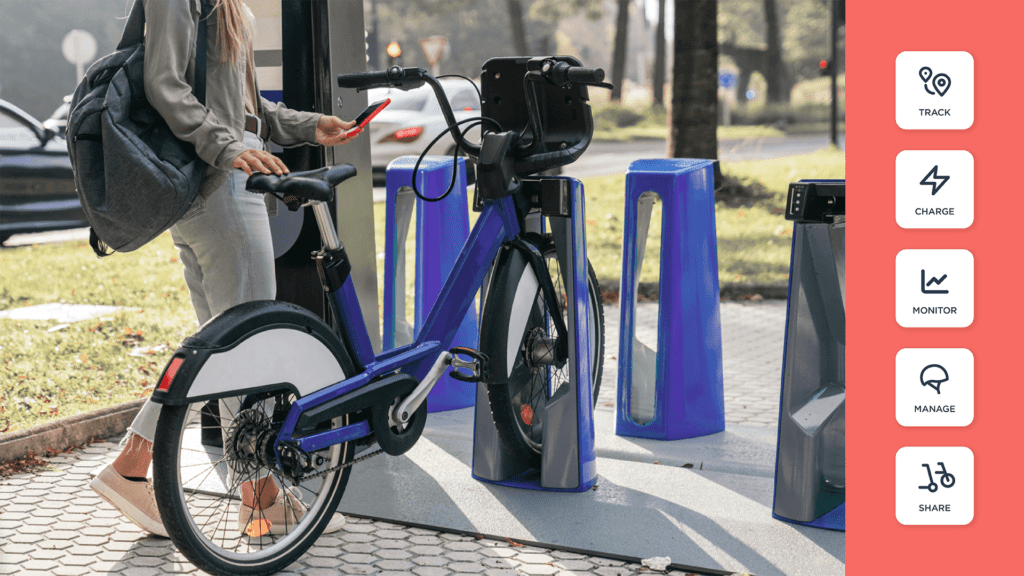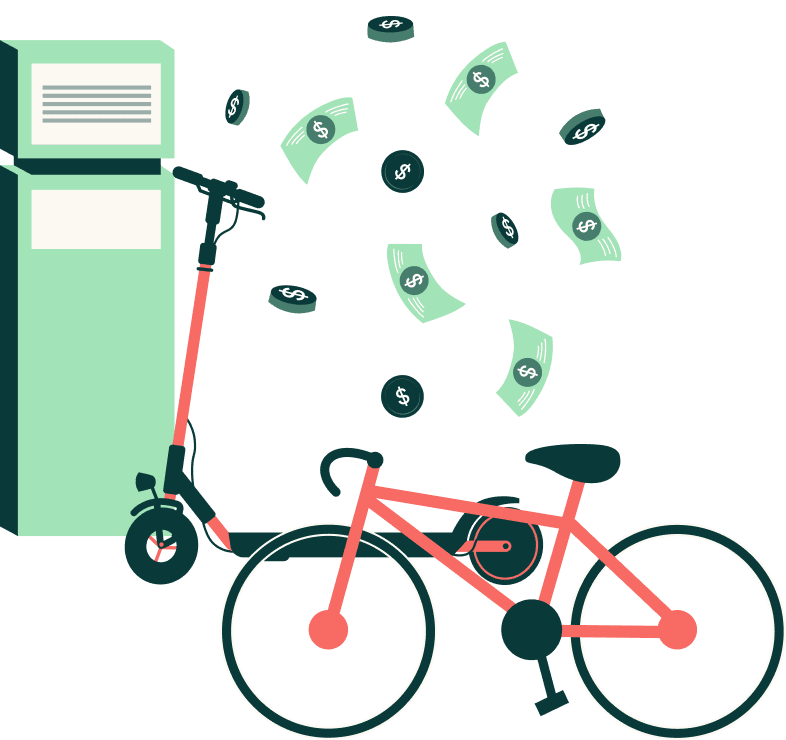A lot of new operators can find it overwhelming and difficult to locate the information necessary when starting a scooter share. Here, we answer all of the main questions related to starting a scooter rental business and provide recommendations with respect to types of hardware to look into and launch considerations.
Who uses scooter share?
- Based on a survey of over 7,000 people in the US conducted by populus.ai, over 70% had a positive opinion of electric scooters.
- In America, bike shares typically show significantly more adoption by men than women. There is a near equal distribution of interest in scooters between genders. Slightly more women than men (72% vs. 67%) had a positive perception of scooters.
- Based on income level, those households earning $75,000 USD or less per year are the most likely to feel positively about scooters. Areas with earners of $200,000 USD or more per year were the least likely to have a positive perception about scooters.
- Highest adoption was seen by those who earn between $20,000–$50,000 USD per year
Takeaway: Urban environments with a high density of middle-class individuals are good locations to launch a fleet.

Where should I launch a scooter share?
Your system should have:
- A coverage area of at least 10km2
- 10–16 parking areas per km2
- Parking areas should be no more than 250m between each other
- 10–30 scooters per 1,000 residents within coverage area
Consider the local infrastructure when launching a fleet. Environments with predominately cobblestone roads will not lend themselves to a comfortable ride given the low clearance and small wheels of the electric scooter.
Takeaway: Aim for a city center with high levels of traffic congestion. Areas around public transit stops are also good locations.

Which scooters should I use?
- A must-have feature for a scooter is either an internal Internet of Things (IoT) device or the ability to mount an external one.
- “Nice-to-have” features include swappable batteries, extended range (how far they can go), and the manufacturer’s ability to provide custom branding.
- There are many new companies launching their own brand of differentiated scooters. Some include larger wheels, seats and extended battery life. Before committing to a brand, buy a couple samples and test them vigorously.
Takeaway: Try before you buy.
When should I launch?
Many of the large scooter-share companies are making landgrabs to dominate the market. Nonetheless, given the popularity of scooters, there is still a lot of room for the independent operator to launch their own system.
Some operators consider seasonality when determining their launch date; however, it is important for you to launch quickly so customers can learn about your brand.
Takeaway: Speed to market is crucial, so don’t wait.

Why should I launch a scheme?
Anecdotal evidence and number crunching suggest that scooter-share fleets become profitable at a jaw-dropping pace. The commonly disseminated number within the industry is that the breakeven point occurs after approximately 12 weeks.
Startup costs to consider:
- Cost of Scooters
- Cost of Internet of Things (IoT) device
- Cost of Software Development
- Cost of Software hosting, maintenance, and upgrades
- Cost of Operational Staff
- Charging Costs
- Storage Costs
Takeaway: As a rough estimate, assume you will need $125,000 USD per 100 scooters in your fleet.
How do I launch a scheme?
Joyride is ready to get you started. For more information, please contact us at hi@joyride.city.





